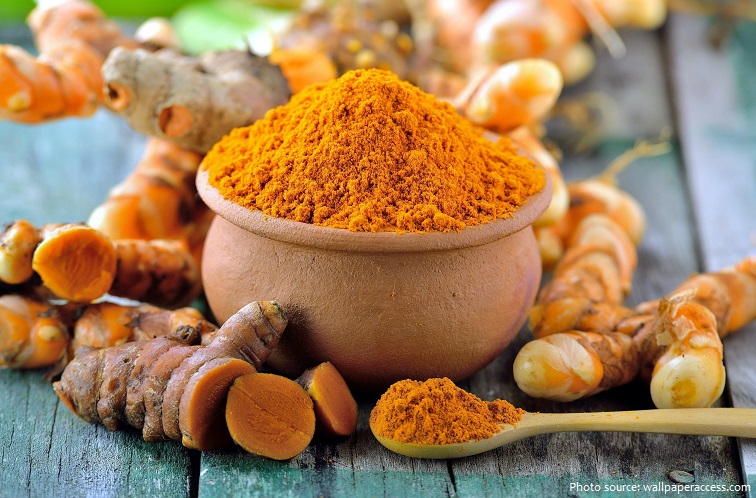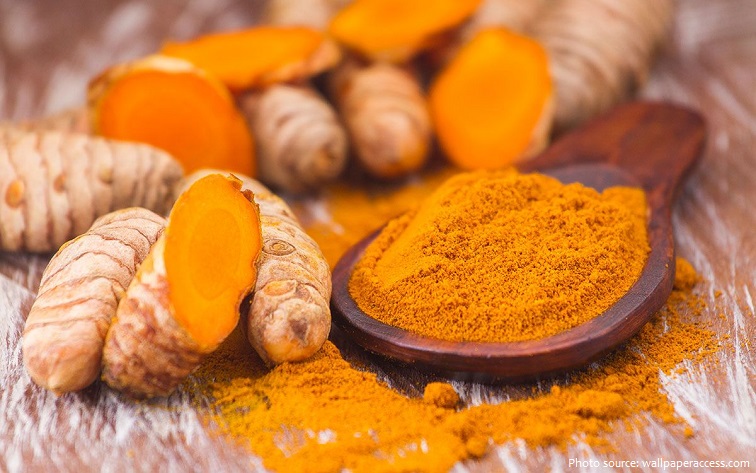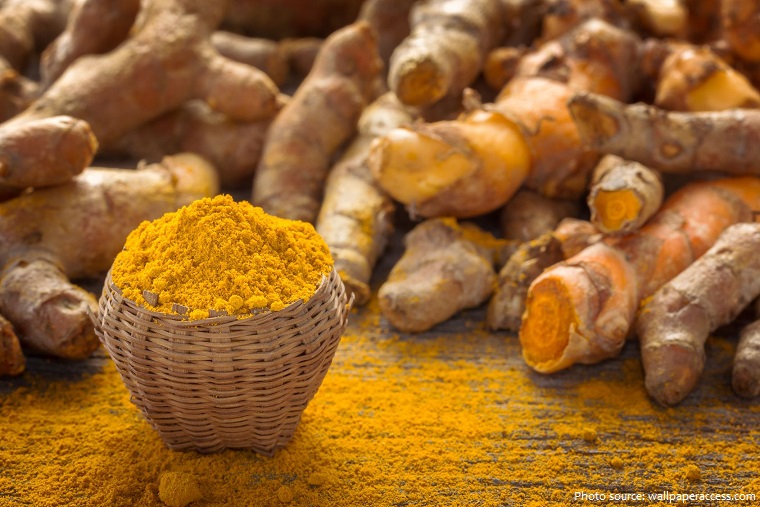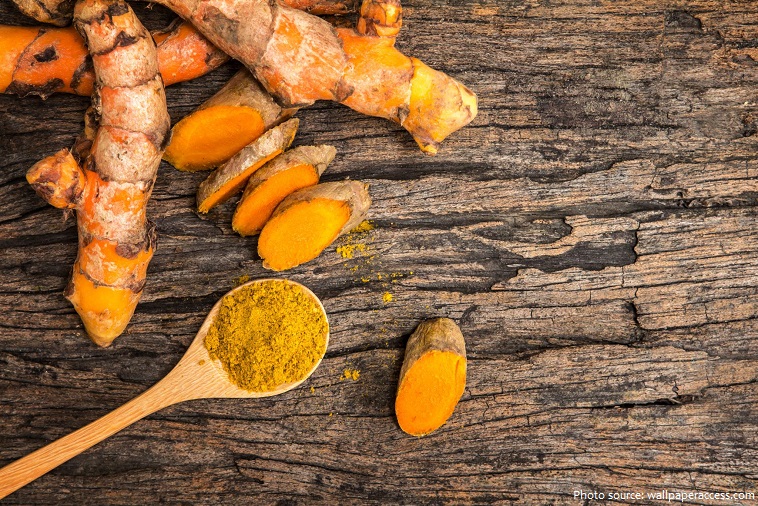
Turmeric perennial herbaceous plant of the ginger family.
Turmeric plants reach about 1 metre (3.3 feet) in height and bear long simple leaves with long petioles (leaf stems). The leaves emerge from the branching rhizomes that lie just below the soil surface. Older rhizomes are somewhat scaly and brown in colour, while young rhizomes are pale yellow to brown-orange. The small yellow-orange flowers are borne in the axils of waxy bracts that are usually pale green or tinged with purple.
Grown for its root, turmeric has an ancient history of uses in cooking, fabric dyeing, cosmetics and traditional medicine.
Turmeric spice powder is made from the root of a plant. It is mildly aromatic and has scents of orange or ginger. It has a pungent, bitter flavor.

It is widely used in cooking and gives Indian curry its flavor and yellow color. It is also used in mustard and to color butter and cheese.
Turmeric has been used in Asia for centuries and is a major part of Ayurveda, Siddha medicine, traditional Chinese medicine, Unani, and the animistic rituals of Austronesian peoples.
From India, it spread to Southeast Asia along with Hinduism and Buddhism, as the yellow dye is used to color the robes of monks and priests. Turmeric has also been found in Tahiti, Hawaii and Easter Island before European contact. There is linguistic and circumstantial evidence of the spread and use of turmeric by the Austronesian peoples into Oceania and Madagascar. The populations in Polynesia and Micronesia, in particular, never came into contact with India, but use turmeric widely for both food and dye. Thus independent domestication events are also likely.

Turmeric was found in Farmana, dating to between 2600 and 2200 BC, and in a merchant’s tomb in Megiddo, Israel dating from the second millennium BC. It was noted as a dye plant in the Assyrians Cuneiform medical texts from Ashurbanipal’s library at Nineveh from 7th century BC. In Medieval Europe, turmeric was called “Indian saffron.”
In ancient times it was used as a perfume as well. The rhizome has a pepperlike aroma and a somewhat bitter warm taste and has a strong staining orange-yellow colour.
It is only in recent years that Western scientists have increasingly recognized the medicinal properties of turmeric.
Science has started to back up traditional claims that turmeric contains compounds with medicinal properties. These compounds are called curcuminoids. The most important one is curcumin. Curcumin is the main active ingredient in turmeric. It has powerful anti-inflammatory properties, making it a potential treatment for a number of health conditions, including reduced pain and increased ease of movement in people with osteoarthritis. One study found that taking turmeric extract three times daily was comparable to taking a 1,200-milligram dose of ibuprofen daily. However, more research is necessary to confirm these effects.

Other research suggests that curcumin may reduce cholesterol and triglyceride levels. In addition, it may lessen some of the symptoms of rheumatoid arthritis, such as joint swelling and morning stiffness. Other
areas of investigation include curcumin’s effect on Crohn’s disease, certain cancers, depression, diabetes, joint pain and irritable bowel syndrome.
When taken by mouth or applied to the skin, turmeric — and the curcumin it contains — appears to be generally safe when limited to less than 8 grams a day. That said, different amounts often are recommended depending on the health condition being addressed, and higher doses have been used for limited periods of time. High doses or long-term use may cause gastrointestinal upset for some people.

Turmeric is also used in the formulation of some sunscreens. In chemistry, it is used in the making of papers to test for alkaline solutions, as a paper soaked in a tincture of turmeric turns reddish-brown and dries to a violet color in the presence of alkaline solutions
The name “turmeric” possibly derives from Middle English or Early Modern English as turmeryte or tarmaret. It may be of Latin origin, terra merita – “meritorious earth”.
Turmeric powder is about 60–70% carbohydrates, 6–13% water, 6–8% protein, 5–10% fat, 3–7% dietary minerals, 3–7% essential oils, 2–7% dietary fiber, and 1–6% curcuminoids.